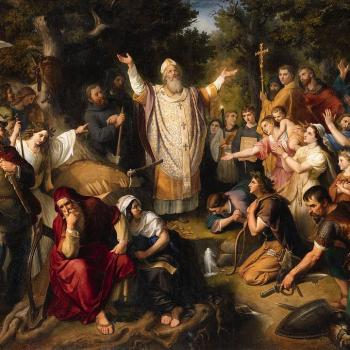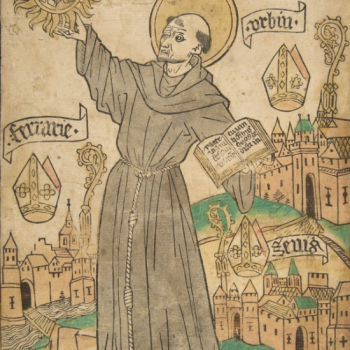The book of Ruth finds it’s place in the Christian canon of scripture wedged into the Deutoronomic History (Joshua, Judges, 1 and 2 Samuel and 1 and 2 Kings). It offers a break from the larger framework of Israel history and presents us with a charming story of one seemingly unimportant family in Bethlehem.
Although few would argue that the book of Ruth is not a beautiful story, in the context of the many great things that happen in the Bible, many are left to question “why is such a simple narrative included in the canon of scripture.” At first glance the book of Ruth seems like a simple peasant walking amongst giants. I see at least seven issues that help us understand some of it’s theological implications and why Ruth is in the canon of Holy Scripture:
Although few would argue that the book of Ruth is not a beautiful story, in the context of the many great things that happen in the Bible, many are left to question “why is such a simple narrative included in the canon of scripture.” At first glance the book of Ruth seems like a simple peasant walking amongst giants. I see at least seven issues that help us understand some of it’s theological implications and why Ruth is in the canon of Holy Scripture:
- The family of David: Ruth is an ancestor of King David, and ultimately of Jesus. One of the main reasons this story is included is to give some background on David’s family. This piece serves to highlight the positive character of one of David’s most problematic family members. Ruth is a “problem” in the purity of David’s line. She is a gentile. This book shows all who would seek to disqualify the Davidic line that Ruth is not a family member to disdain but to revere.
- The role of an immigrant: Ruth is a Gentile she comes into Israel as a moabitess, the way she interacts with the people and culture that is new to her can offers an opportunity to reflect on how to a faithful person in a new context and how to be a faithful community towards immigrants and outsiders.
- The role of women: Ruth is only one of two women who lend their names to a book of the Bible. It is easily the most female focused book in the canon. Here one women is extolled for her love toward another women, and offers an incredibly important voice of the value and worth of women as individuals.
- The example of chesed (חסד): The Hebrew word chesed is hard to translate. It is sometimes translated “steadfast love,” “lovingkindess,” “unrelenting love,” or “Covenant faithfulness”. The book of Ruth is an example of a lived Chesed. This is perhaps the chief theological value the book imparts. The word itself occurs three times in the book (1:8; 2:20; 3:10). It shows the chesed of God, of Ruth, and of the community of Love between the women in the story.
- A contrast to Judges – The book of Judges is filled with tales of violence between the Israelites, the surrounding nations, and even themselves. Each man does what is right in his own eyes. The book of Ruth takes place during the time of the Judges, but in contrast to Judges offers a witness of a women who offers a faithful life of service to others in a quiet town.
- A view of God for the “everyday” context: Ruth is a story of a simple women; she is not a queen or a ruler; she is not a judge or a general. Ruth is a simple women in a simple context. She does not receive any supernatural words of prophecy, and she does not see any miracles preformed. She lives her life faithfully in a humble context. This gives a biblical face to the theology of everyday faithfulness.
- It offers a archetype of conversion: The book of Ruth presents us with a story of a convert. Ruth embraces the God of Naomi when she embraces Naomi. It points out powerfully how community and conversion are linked, and the role of others in our relationship to God.













